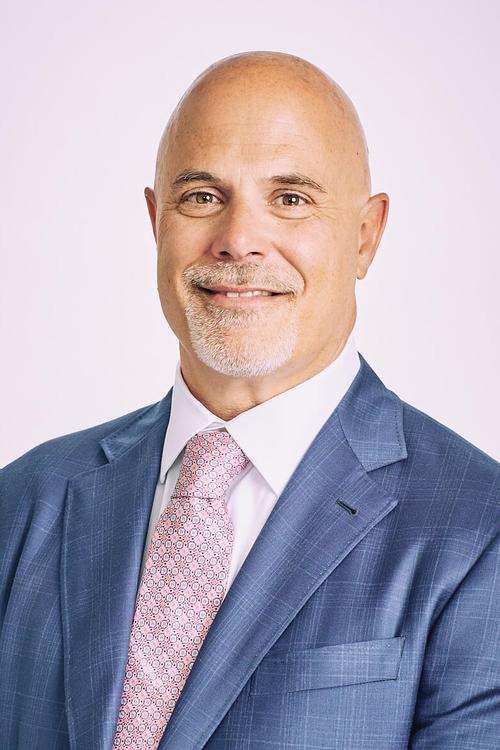 The city of Boston has committed to providing resources to eliminate severe and deadly traffic crashes in the city by 2030. A large part of this effort involves making Boston’s streets safer for pedestrians and cyclists. Most trips in the city of Boston are made by people on foot, by bike, or through public transportation.
The city of Boston has committed to providing resources to eliminate severe and deadly traffic crashes in the city by 2030. A large part of this effort involves making Boston’s streets safer for pedestrians and cyclists. Most trips in the city of Boston are made by people on foot, by bike, or through public transportation.
As part of the initiative, the city collects and publishes data on serious and fatal crashes in Boston. There were 335 bicycle accidents on average in Boston from 2017 to 2011, with a peak of 423 bike crashes in 2018. As of April, Boston reported 43 bike crashes in 2022 with no deadly accidents to date.
Locations of Fatal Bike Accidents in Boston
In Vision Zero Fatality Records, eight bicyclist deaths were reported from 2015 to 2022.
In 2015, three fatal bike accidents took place in June, May, and August. The May and August bike accidents each occurred at intersections. One casualty was at New England Avenue and Talbot Avenue, and the other was at Beacon Street and Massachusetts Avenue. The June bike accident occurred on Selden Street, near Lena Terrace and Wooddale Avenue.
In 2016, there was one deadly bike accident on Cambridge Street near Dustin Street in November.
In 2017, there were two fatal bike accidents. One deadly accident was in April at the intersection of Clarendon Street and Commonwealth Avenue, and the other in November on Cottage Street near Robey Street and Norfolk Avenue.
In 2020, there were two deadly bike crashes at intersections. In April, an accident took place at Harrison Avenue and Massachusetts Avenue. In June, an accident took place at Cummins Highway and Richmere Road.
There were no deadly bike accidents in Boston 2018, 2019, 2021, or to date in 2022.
Boston’s Plans to Make Streets Safer for Massachusetts Cyclists
Vision Zero is Boston’s plan to eliminate fatal and severe crashes, including bike accidents, in Boston by 2030. The program was announced in 2015 by former Mayor Marty Walsh.
If you visit the city’s Zero Boston webpage, you will find several helpful resources and data reports. For example, there is an interactive “Safety Concerns Map” on the page where people - including you - can select a location and tell the city about your safety concern. There is also an “Injury Crash Map” that illustrates the reported crashes in Boston.
Here is a snapshot of the crash map. The orange dots mark the locations of bicycle crashes this year. If you click on any of the dots, they will tell you how many crashes are in that location, and what date the collision took place.

The Top 5 Bike Injury Crash Intersections in Boston
In another map created based on data from 2015 to 2017, Boston identified the most dangerous intersections for bicyclists.
The 5 most dangerous intersections based on bike crash data in Boston:
- Massachusetts Avenue and Beacon Street
- Massachusetts Avenue and Commonwealth Avenue
- Massachusetts Avenue and Newbury Street
- Massachusetts Avenue and Melnea Cass Boulevard
- Columbus Avenue and Cedar Street
Four of the five most common places for bike crashes in Boston are along Massachusetts Avenue. You can find an interactive map version of crash data here.
Changes Boston is Making for Safer Cycling on the Streets:
- A proposed state-wide 3-feet passing distance law.
- Creating better bike lanes – see more than 20 projects below!
- The new city-wide default speed limit is 25 miles per hour unless otherwise posted.
- The city launched a smartphone app called Boston’s Safest Driver. The app provides feedback on five metrics: rapid acceleration, harsh braking, sharp turns, at-risk speeding, and phone distractions.
- The city also published a “Street Safety Toolkit” with information on common safety concerns for bikers, walkers, and drivers and information on safer turns and safer speeds. The Toolkit is extremely interesting and offers deep and innovative insight into bicyclist, pedestrian, and driver safety in Boston.
How is Boston Creating Better Bike Lanes?

Boston listened when city residents asked for more comfortable and safe bike lanes and better connections between homes, jobs, schools, and open spaces.
Boston’s extensive network of conventional bike lanes dedicates about 5 feet of space in the street for cyclists. The addition of more bike lanes in the city has led to more people biking to work, to the T, to run errands, and for recreation.
Because many people don’t feel safe in traditional bike lanes, Boston is creating more bike routes with separation between drivers and bicyclists. The city is also working to calm traffic on local streets to improve safety.
There are more than 20 projects in the works to increase safety for cyclists in Boston.
Current Boston Bike Corridor Projects include:
- Fenway-Yawkey Multi-Use Path
- A bike path will bridge a gap by connecting the Emerald Necklace path to Lansdowne Station, Fenway Park, and new separated bike lanes on Beacon Street that will connect to Kenmore Square.
- Connect Downtown
- Iconic downtown streets are being redesigned to create a connected bike network and to prioritize walking.
- Connect Historic Boston
- Historical sites in downtown Boston will be better connected for residents and visitors to safely walk and bike between locations.
- Beacon Street Design Project
- Based on data, the main goal is to slow drivers on Beacon Street in the Back Bay to increase safety for cyclists, pedestrians, and motorists.
- Boylston Street
- Boylston Street in the Fenway is a priority bike corridor in Boston. Bike lanes will be added in the area.
- Cambridge Street Safety Improvements in Allston
- Existing bike lanes are getting upgrades to improve safety and comfort of cyclists.
- Commonwealth Ave Phase 2
- Commonwealth Avenue is being transformed between the BU Bridge and Packard’s Corner. The project will have separated bike lanes, protected intersections, and more.
- Commonwealth Ave Phase 3 & 4
- Commonwealth Avenue is being redesigned between Brighton Avenue (Packard’s Corner) and Warren and Kelton Streets. Separated bike lanes are part of the redesign. The project's centerpiece is redesigning the Commonwealth Avenue and Harvard Avenue intersection.
- Cummins Highway
- Better bike lanes will be added to improve safety and access for residents of Mattapan.
- Harrison Avenue Safety Improvements
- Bike facilities will be added on Harrison Avenue between Essex and Herald as one of many improvements planned for Chinatown.
- Mass. Ave. Better Bike Project
- A safe and comfortable biking facility will be designed to connect Dorchester, Roxbury, and the South End.
- North Washington Street Bridge
- A new bridge that is walkable, multimodal, and sustainable will complement the Zakim Bunker Hill Bridge. Pedestrians, cyclists, and motorists will be able to use the bridge.
- Nubian Square Design Project
- Roadways, intersections, and streetscape plans will be designed with improvements for cyclists as a goal.
- Ruggles Street Project
- Ruggles Street will be redesigned for increased safety, including bicycle accommodations.
- Rutherford Ave / Sullivan Square
- The Boston Transportation Department is still looking for input on shaping the future corridor, but it will include providing links to the regional bicycle network.
- South Bay Harbor Trail Project
- A bike and walk-friendly 3.5-mile trail will connect Roxbury, the South End, and South Boston to their waterfronts.
- Southwest Corridor Crossing Project
- This project will improve walking and biking along the Southwest Corridor in Roxbury and Jamaica Plain.
- Summer Street Multimodal Corridor Improvements
- Bike, pedestrian, and transit improvements are being made between the Reserve Channel and South Station.
- Tremont Street Design Project
- Design elements are being implemented to increase safety at intersections. The city is improving Tremont Street between Mass Ave and Herald Street in the South End.
- Washington Street (Downtown)
- A separated bike lane north of Kneeland Street is being added to Washington Street.
- Warren Street
- Separated bike lanes are being designed in Roxbury as part of a bus-priority project on Warren street.
- Blue Hill Ave Transportation Action Plan
- The city is requesting input from pedestrians, cyclists, drivers, and bus riders on how to improve Blue Hill Ave best.
- American Legion
- The goal is to make the area more comfortable for families riding bikes, people walking and catching the bus.
How YOU can Help Make Massachusetts Streets Safer for Cyclists
Two important ways drivers can help keep cyclists safe is by watching their speed in the city and coming to a complete stop at yellow and red lights. Speeding and running red lights are two of the most dangerous driving behaviors in the city, according to LivableStreets.
The new 25mph speed limit in Boston was set based on data that show when a driver is traveling at or below 25mph, someone is far less likely to be severely injured or killed in a traffic crash - whether walking, driving, or bicycling.
If a pedestrian is hit by a driver traveling at 30mph, there is a 47% chance they’ll be seriously injured or killed. At 25mph, the possibility of being killed in an accident drops to 12%.
Injured On A Bike In Massachusetts? Our Chelsea And Peabody Bike Accident Attorneys Offer FREE Consultations
As cyclists ourselves, we know the joy that cycling brings. But as injury attorneys, we also know about the dangers of cycling in Boston and beyond with less-than-friendly Massachusetts drivers.
If you were injured in a bicycle or e-bike accident, Spada Law Group’s injury attorneys can work to protect your legal rights. We have three offices but proudly serve the entire state with the ability to meet with you remotely from the comfort of your own home. Contact us for a free consultation so we can learn more about your bike or e-bike injury case and see how we can help you get the recovery you deserve after your accident.



